The Interesting Secrets of The Iconic Statue of Liberty
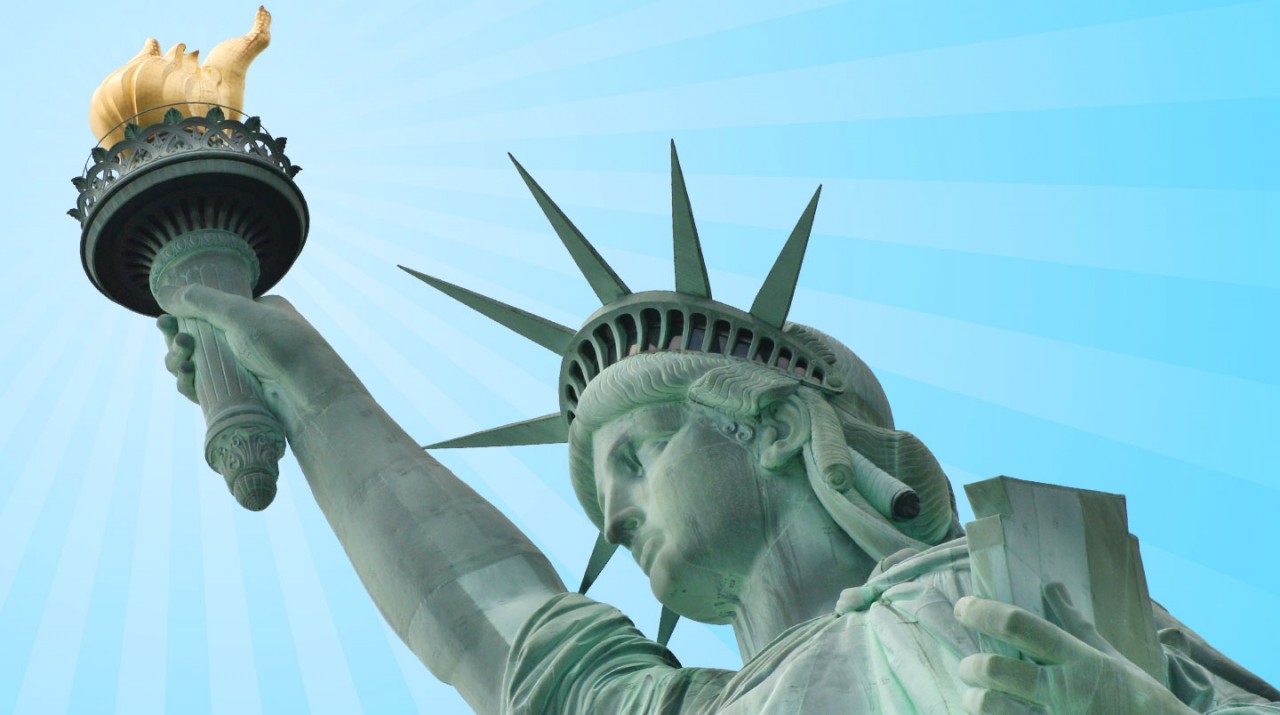 |
| Photo: Getty Images |
The Statue of Liberty is a colossal neoclassical sculpture on Liberty Island in New York Harbor in New York City, in the United States The copper statue, a gift from the people of France to the people of the United States, was designed by French sculptor Frédéric Auguste Bartholdi and its metal framework was built by Gustave Eiffel. The statue was dedicated on October 28, 1886.
The statue is a figure of Libertas, a robed Roman liberty goddess. She holds a torch above her head with her right hand, and in her left hand carries a tabula ansata inscribed JULY IV MDCCLXXVI (July 4, 1776, in Roman numerals), the date of the U.S. Declaration of Independence. A broken shackle and chain lie at her feet as she walks forward, commemorating the recent national abolition of slavery. After its dedication, the statue became an icon of freedom and of the United States, seen as a symbol of welcome to immigrants arriving by sea.
The statue of Liberty is one of the most famous monuments in the World. Anyone visiting New York city can see her, but not everyone knows the secrets of Lady Liberty. As a matter of fact, she might not be a Lady at all. Coming in hundreds of pieces as a gift from France, Lady Liberty became a remarkable landmark of rich historical value.
1. The statue is made up of 350 parts
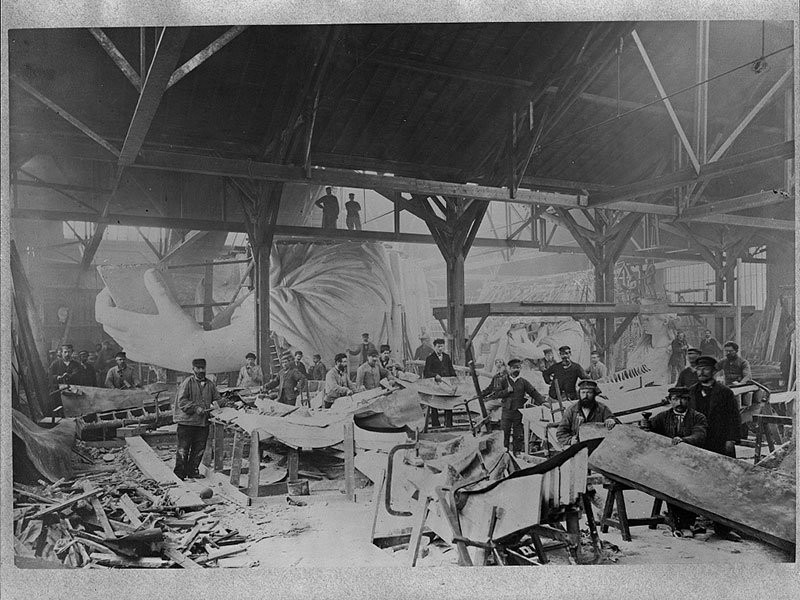 |
| Workmen constructing the Statue of Liberty in Bartholdi's Parisian warehouse workshop in the winter of 1882. Albert Fernique/U.S. Library of Congress |
In 1885, some unique cargo arrived in New York City’s harbor — 350 pieces of copper and iron housed in 214 wooden crates all the way from France, writes Jen Carlson for Gothamist. With a handy instruction manual and some brawn, workmen would assemble these fragments into one of the city’s most iconic landmarks today, the Statue of Liberty.
A few crates of the statue had actually arrived a decade earlier. Lady Liberty’s arm and torch went on display at the Centennial Exposition in Philadelphia in 1876, and then at Madison Square Park to generate buzz and raise money for the construction project. Carlson writes that the sight looked not unlike that famous scene from the film Planet of the Apes, and she’s not wrong.
The rest of the statue arrived aboard the French naval vessel Isère on June 17, 1885. Once workers finished building her pedestal, construction on the statue itself began in the summer of 1886. At the time, Scientific American detailed the unique method of assembly devised by French sculptor Auguste Bartholdi.
Workers in Bartholdi’s studio in France then broke the statue down into roughly 350 pieces and built wooden frames to help the pieces keep their shape during the voyage. However, because some pieces still warped during transport, they had to be refitted once they reached New York.
Then, each piece had to be secured with an iron framework and supported with wooden beams. The intricate construction process delayed her inauguration from September to late October in 1886.
2. Lady Liberty Could Have Been Sir Liberty
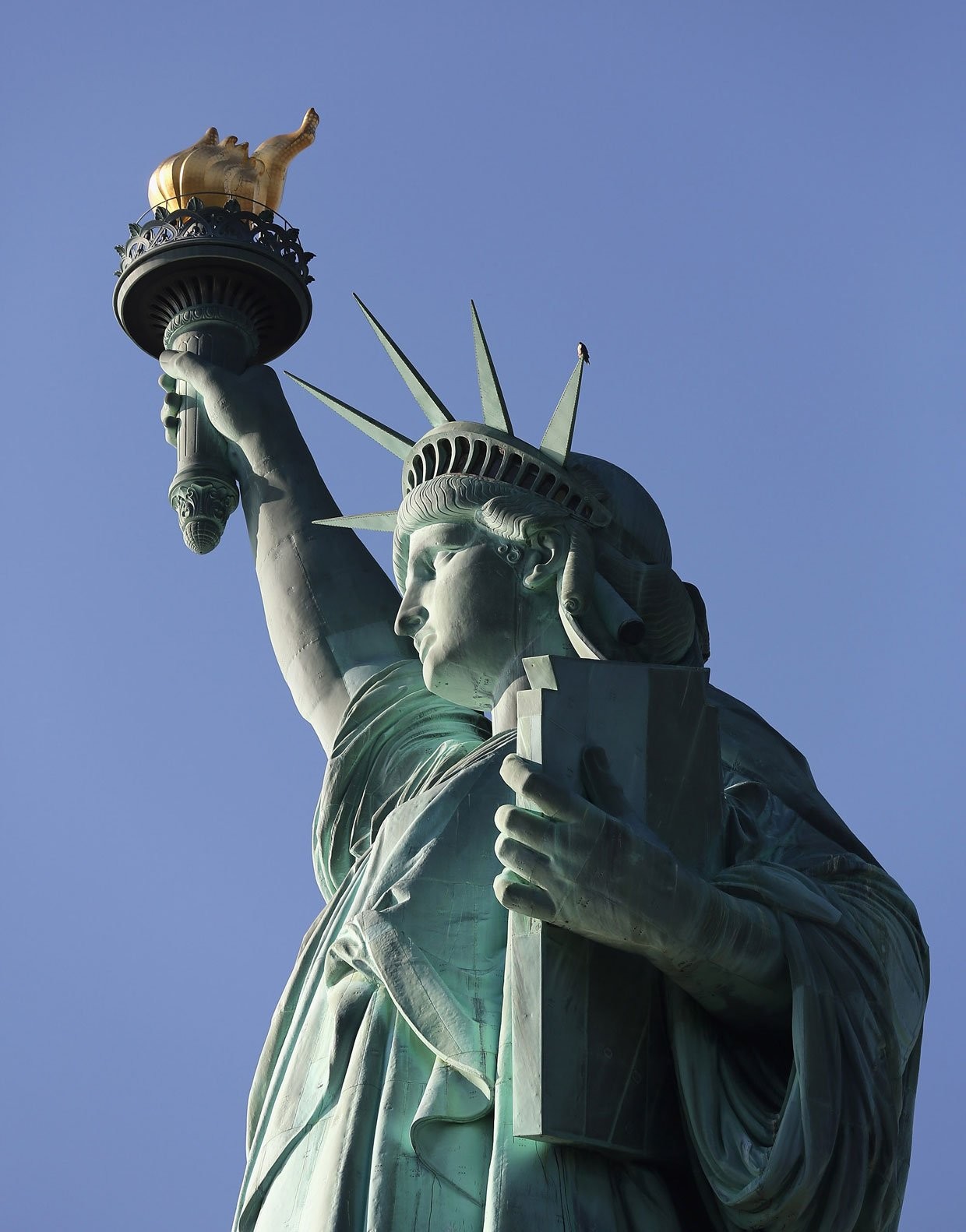 |
| Photo: Flickr |
The Statue of Liberty has welcomed immigrants and visitors to the United States for more than 130 years and now, a new documentary speculates that the famed landmark might be a drag queen.
In a 2016 interview with the New York Post, author and journalist Elizabeth Mitchell alleged that Lady Liberty was actually a depiction of French sculptor Frédéric Auguste Bartholdi’s brother Charles, once a law student who ended up in an insane asylum.
“There’s a rumor it’s Bartholdi’s brother,” she said. “Going through photos [Bartholdi] had in his files of his brother, I started to look at the face more carefully, and it really did look to be like Liberty.”
Fenton Bailey and Randy Barbato, the multi Emmy-winning duo behind RuPaul’s Drag Race, are revisiting the rumor in their documentary, Liberty: Mother of Exiles, which explores the statue’s origins and the construction of The Statue of Liberty Museum which recently opened at its base.
"I think it was absolutely a fitting subject for us," Barbato told Salon. "Overexposed and under-revealed. A subject people think they know.”
At Monday night’s premiere, the duo told The Hollywood Reporter that they began working on the documentary before Donald Trump became president.
"Little did we know that everything that would happen in the next three years only makes what Lady Liberty stands for even more important than ever," Bailey said. "I think it made the film ultra-relevant."
Diane von Furstenberg, also referred to as the statue’s “godmother,” makes an appearance in the documentary having raised $100 million to fund the museum. Furstenberg told The Hollywood Reporter she became involved with the museum after being asked to join the board of the Statue of Liberty-Ellis Island Foundation by its president and CEO, Stephen Briganti.
In her book, Liberty's Torch, Mitchell argues that the statue was modeled after Bartholdi’s brother since he served as his caretaker during his later mental illness and would have had plenty of time to study his features as he sat with him in silence.
“His brother in his adult years had actually gone mad, and it was Bartholdi’s task to go once a week to visit, sometimes [spending] hours just staring at his brother, who was not speaking,” she said. This sort of facial study is important for sculpting.
3. Why Is the Statue of Liberty Green?
 |
| Statue of Liberty Changing color over time (Credits: Dozr) |
The Statue of Liberty is a famous landmark with an iconic blue-green color. However, it wasn't always green. When the Statue was unveiled in 1886, it was a shiny brown color, like a penny. By 1906, the color had changed to green. The reason the Statue of Liberty changed colors is that the outer surface is covered with hundreds of thin copper sheets. Copper reacts with the air to form a patina or verdigris. The verdigris layer protects the underlying metal from corrosion and degradation, which is why copper, brass, and bronze sculptures are so durable.
Most people know copper reacts with air to form verdigris, but the Statue of Liberty is its own special color because of its unique environmental conditions. It's not a simple single reaction between copper and oxygen to produce a green oxide as you might think. The copper oxide continues to react to make copper carbonates, copper sulfide, and copper sulfate.
The speed at which the patina develops (20 years, in the case of the Statue of Liberty) and color depends on the humidity and air pollution, not just the presence of oxygen and carbon dioxide. Patina develops and evolves over time. Nearly all the copper in the Statue is still the original metal, so the verdigris has been developing for over 130 years.
When the Statue first turned green, people in authority decided it should be painted. The New York newspapers printed stories about the project in 1906, leading to a public outcry. A Times reporter interviewed a copper and bronze manufacturer, asking whether he thought the statue should be repainted. The company's vice president said that painting was unnecessary since the patina protects the metal and that such an act might be considered vandalism.
Although painting the Statue of Liberty has been suggested several times over the years, it has not been done. However, the torch, which was originally copper, corroded after a renovation to install windows. In the 1980s, the original torch was cut away and replaced with one coated with gold leaf.
4. Three Original Statues of Liberty
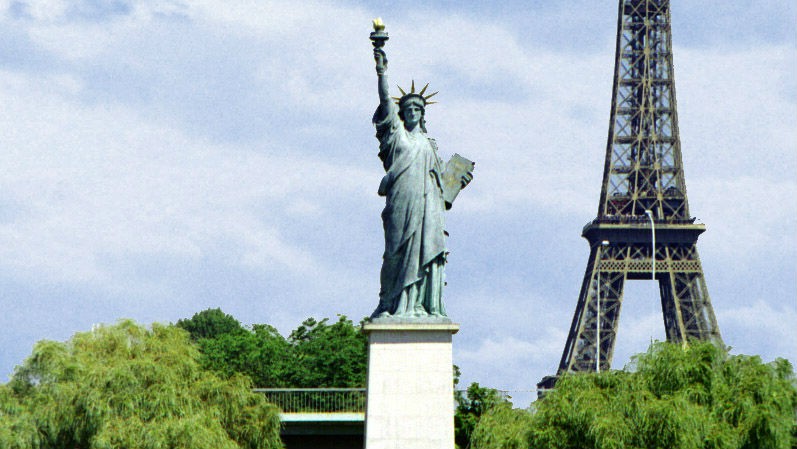 |
| Photo: The Earful Tower |
Designed by French sculptor Frédéric Auguste Bartholdi, the most famous Statue of Liberty is found in the United States and graces the entrance to New York Harbor. The other two depictions of Liberty are much smaller and are located in Paris, France.
The first of the Parisian Liberties is found in the Jardin du Luxembourg (Luxembourg Garden). Erected in 1906, this Liberty is a miniature bronze model created by Bartholdi for use as a visual aid during the construction of the larger New York statue. The second Parisian Liberty is located on the Ile aux Cygnes (Island of Swans) in the Seine River, not too distant from the Eiffel Tower. This 37-foot high replica was erected on July 4, 1889, on the centennial of the Storming of the Bastille, in commemoration of both American Independence and the French Revolution.
5. The Statue of Liberty Almost Didn't Get Built
The construction of the Statue of Liberty was a joint project between France and the United States. France was supposed to build the copper statue of a woman raising a torch, and the United States was supposed to build its pedestal.
But for a while, it wasn’t clear if the statue would go up in New York City at all. When the Statue of Liberty arrived (in pieces) in New York Harbor on June of 1885, the pedestal was still under construction, and fundraisers were still collecting the money to finish it.
Discussions about France building a statue for the United States started about 20 years before the Statue of Liberty arrived in New York. The French historian Édouard de Laboulaye first proposed the idea around 1865, the year the Civil War ended and the United States began abolishing slavery.
De Laboulaye, an abolitionist and advocate for democracy, believed that funding a statue celebrating the United States’ victory would strengthen support for democracy in France, which was then under the dictatorship of Napoléon Bonaparte’s nephew. The French sculptor Frédéric-Auguste Bartholdi agreed to design the statue, which was called Liberty Enlightening the World.
When Bartholdi campaigned for public support of the statue in the United States, he promoted the statue as a commemoration of the U.S. centennial on July 4, 1876, which marked a century since the adoption of the Declaration of Independence. The statue wasn’t anywhere near ready by the time of the centennial, but even when the statue arrived in New York City nearly a decade later, the American Committee of the Statue of Liberty still hadn’t raised the roughly $250,000 to $300,000 necessary to build the pedestal.
Most of the money the committee had raised so far had probably come in the form of donations from wealthy Americans. There wasn’t any federal funding for the pedestal, because the U.S. Congress couldn’t agree on a spending package, says Alan Kraut, a history professor at American University and chair of the history advisory committee for the Statue of Liberty-Ellis Island Foundation.
6. The meaning of seven spikes on The Statue of Liberty
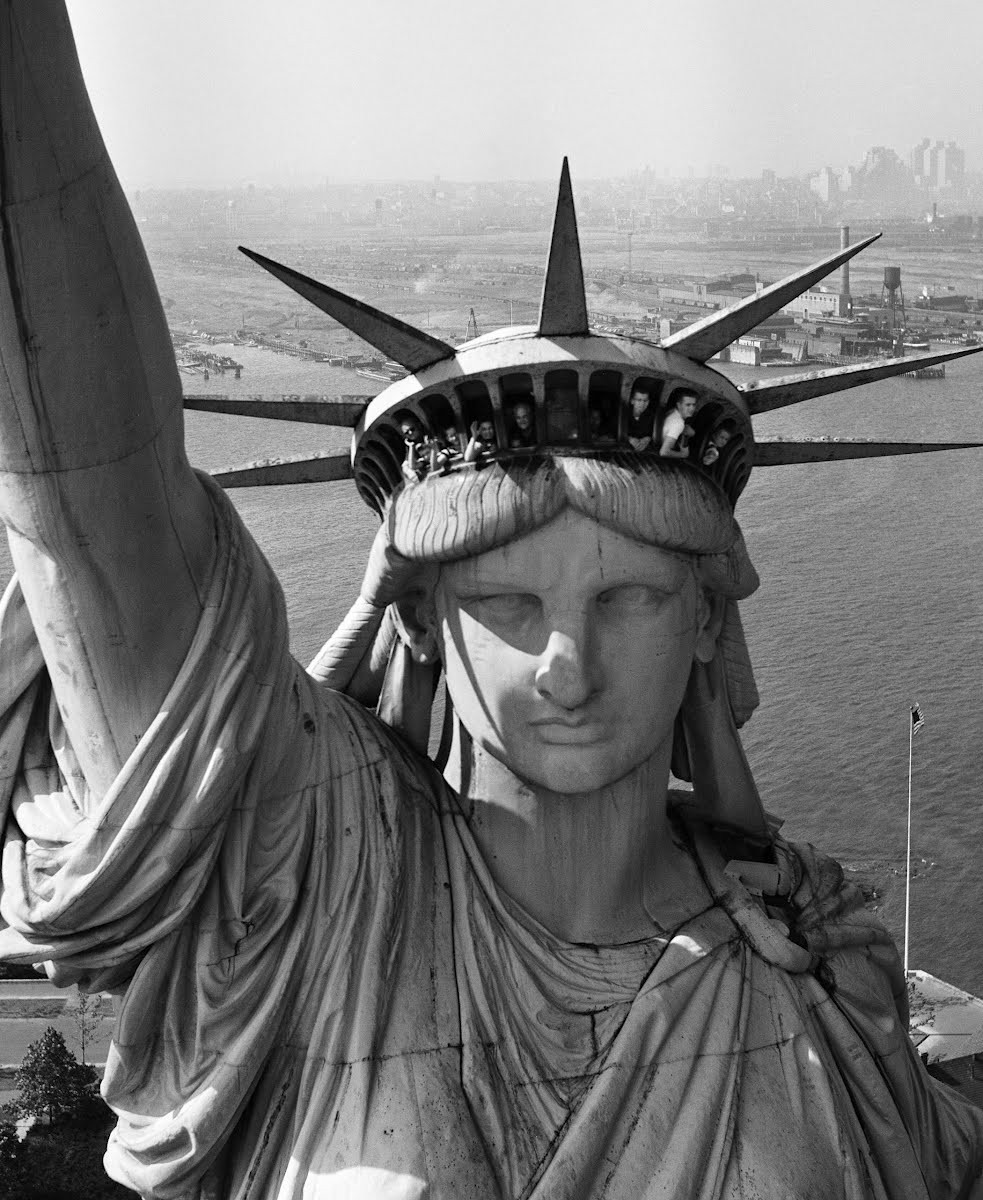 |
| Photo: Google Arts & Culture |
According to USA Today, the Statue of Liberty has seven spikes on her crown. The spikes represent the seven seas and seven continents of the world. Each spike is 9 feet long and weighs up to 150 pounds.
The Statue of Liberty's crown overlooks the New York Harbor, and visitors can reach it by climbing a twisting staircase made up of 354 steps. According to the Statue of Liberty-Ellis Island Foundation, the statue measures 305 feet, 6 inches tall from the pedestal's base to the torch's tip. Lady Liberty measures 111 feet, 6 inches from head to foot, has a 35-foot waistline, has an 8-foot-tall face and weighs 450,000 pounds.
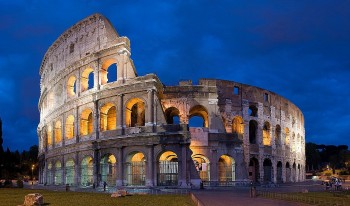 | 11 Insteresting Facts About Italy That You Probably Do Not Know Italy is full of wonderful things, places and iconic plates for first time visitors, but how much do you actually know about this country? Let's ... |
 | Discover Interesting Facts About Oman You May Not Know Oman, a small country with beautiful, historic sites and natural wonders, is full of fascinating facts that a lot of people probably do not know. ... |
 | Interesting Facts That You Do Not Know About Sweet Macarons Macaron are a familiar and popular treat around the world, yet this colorful biscuit-like sweet is also one of hardest ones to make. |
Recommended
 World
World
India reports 9 Pakistani Aircraft Destroyed In Operation Sindoor Strikes
 World
World
Thailand Positions Itself As a Global Wellness Destination
 World
World
Indonesia Accelerates Procedures to Join OECD
 World
World
South Korea elects Lee Jae-myung president
 World
World
22nd Shangri-La Dialogue: Japan, Philippines boost defence cooperation
 World
World
Pakistan NCRC report explores emerging child rights issues
 World
World
"India has right to defend herself against terror," says German Foreign Minister, endorses Op Sindoor
 World
World


